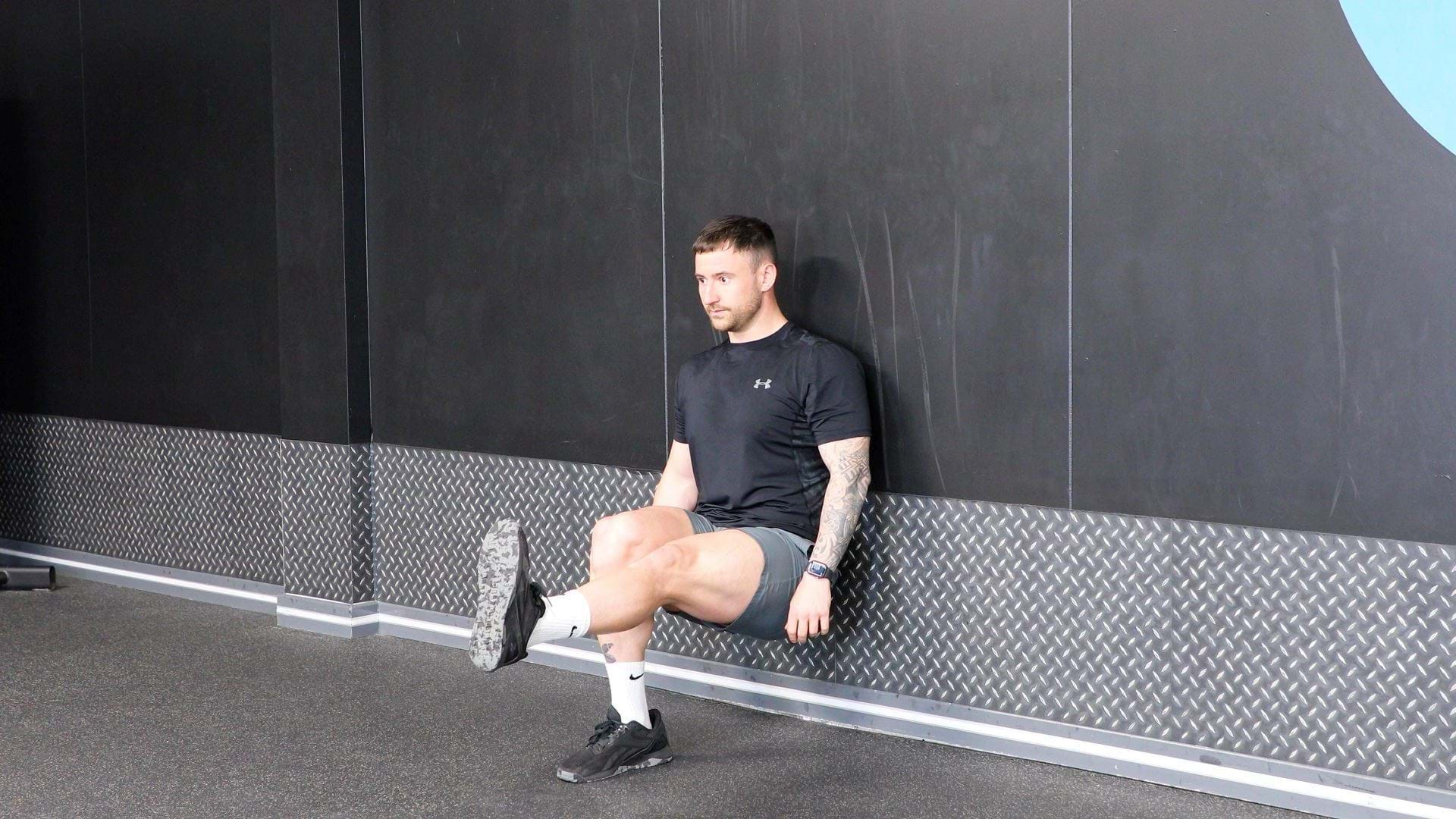Wall Sits
What is a wall sit?

Sometimes known as wall squats, wall sits are an isometric exercise that works the quads, glutes, and calves, as well as the core. In theory, this is a really simple exercise, but in reality it's extremely tough!
Isometric exercises involve holding the muscle in a contracted position. They're great for building isometric strength, endurance, and stability, and can even help to manage blood pressure. Because they don't involve moving the joint, isometric exercises like wall sits are good for people with joint conditions like arthritis, or those recovering from an injury.
Whether you're looking for a joint friendly alternative to the squat, or simply after another lower body exercise to add to your workout, the wall sit is great for anyone look to build strength, size, and stability in the lower body. And as it can be done anywhere there is a wall, you can wall sit at any time of day!
There are a few options to progress this exercise: holding the exercise for longer, placing a weight on your thighs, or switching to one leg wall sits.
Commonly asked questions on wall sits
When adding wall sits into your workout routine, aim to hold each sit for 30 - 60 seconds as one set, and do 3 sets.
As your strength builds, you can increase the time held in each set, or opt for holding a single, longer wall sit.
Wall sits are a knee-friendly exercise as the knees are held in a fixed position, so there is less force being placed on the joint than in a dynamic exercise like the squat.
Wall sits also help to strengthen the quads and hamstrings. These muscles stabilise and support the knee, so strengthening them can help improve knee pain.
Wall sits are great for building isometric strength and muscle endurance, and can help to build muscle. However, if your goal is to build bigger muscles, wall sits alone are unlikely to be enough, however they make a great accessory exercise to help with your efforts.
Wall sit tips
- Keep your legs bent at a 90 degree angle with your knees in line with your ankles. If you struggle holding this for more than a few seconds, decrease the angle and build up strength.
- Make sure your back and glutes are against the wall and your **core is engaged **throughout the exercise. This will help avoid stress on the back and work your back and abs.
Wall sit variations

Wall sits and loaded wall sits are great for building lower body isometric strength and mental resilience.

Single leg wall sits improve balance and stability and reduce strength imbalances between the two sides.
If you’re not sure if any of the above exercises are suitable for you, please consult your doctor before you start it. Need guidance on how to perform the exercise? Ask a personal trainer at your gym.